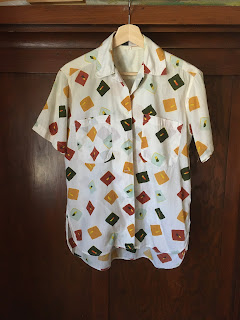I have a mixed relationship with Threads. I subscribe. They don't always have articles I am interested in, or something I want to read how to do. Sometimes this lasts for months. I subscribe because I want to keep them in business for the issues when they do.
Like this one.
This magazine is made by humans, and us humans all make mistakes. Maybe a page got left off, or a color got switched.
This month, I have questions.
These examples are all from the new September 2020 issue #210.
Normally, I will see something that's a little off and file and forget it. When several of them occur in one issue, I crack open my letter to the editor
NOTE: You will need to enbiggen to read these. I did not write them, so I have watermarked them and taken out some of the instructions, as this is NOT MY WRITING. Not pretending it is, either.
Disclaimers disclaimed.....
I've been adding sleeve heads into stuff, so I read this article with interest.
And I'm confused. It feels like the last step has been left off.
We get a lot of information about what to make the sleeve head out of. We get photos of the inside and the outside.
What do we do to finish the seam?
I can see that if it's a jacket that this is all going to be covered up with a lining.
But if it's a blouse, we've got a lot of raw edges here.
Does that organza roll back over the head to finish it off? Or do we leave it raw?
I did that on the Journey jacket, it's ....meh but the sleeves are unlined and I wanted a consistent finish on the interior seams. For looks and for comfort, I want a finished armscye. I'm also looking for a better finish on this (I've tacked it in to get the shoulder to pop and I'm still poking at it).
 |
| this is the inside of the jacket flipped to the outside, and that white stitching is temporary. |
I genuinely would like an answer to this question.
Another article (same current issue) has the classic error of illustrating a technique with the fashion fabric. The problem is either the fabric is black or (in this case) the fabric looks the same on both sides and none of the relevant stitching shows on a beautiful but very busy print. This is a really great technique as far as I can tell. But I can't see it, and I would like to.
In the name of fairness, I have a similar problem with black counter tops and cork floors, which I cannot see the growing moisture ant population on. I understand it is easier to gawp and complain than make a better example. I mean no harm by this.
I'd like to move to a good example of a sample (same issue), that which Threads is known for.
In the sample garment, you can see which is the wrong side of the fabric and which is the right (bonus points for contrasting facing pieces). The drawing on the left is a trifle unclear, I think the photo does a better job all by itself. In my sample diagram on the right I have added the clashing colored layers to the diagram. I think their diagram is more an example of the color themes that they use in their magazine. Some people really like pinks and beiges for their websites and magazines. Some of us don't. Guess which one of us still has a magazine?
The point here is: THIS STUFF IS HARD. I'm not slagging anyone; you can always see the mistakes after you've finished the job. It's even easier after someone else finishes the job. Writing this, I can see several better ways I could illustrate that diagram, but I have to go wipe down that black countertop again.
I get to live with my mistakes..



















































